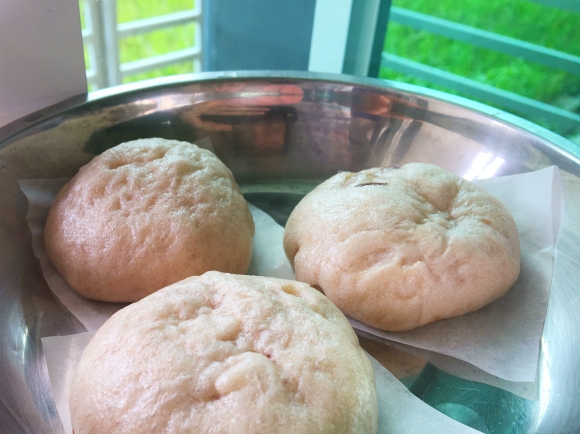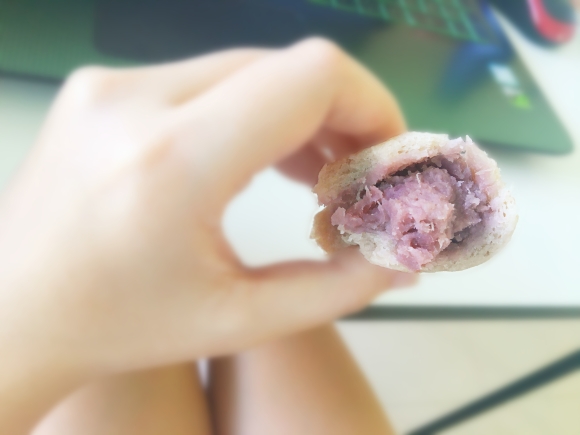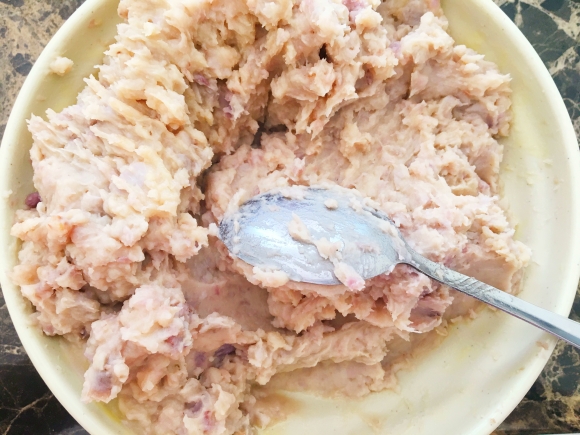
Taiwanese Sticky Rice
(台湾油饭)
Recipe
Chewy, fulfilling and aromatic sticky rice


Mushrooms gently fried at low heat gives off an umami aroma
Recipe
~2 servings
Ingredients:
Glutinous/sticky rice 糯米 1 cup
Braised pork/Chinese sausage/chicken meat 腊肉/腊肠 1/3-1/2 cup
Dried shrimp 虾米 1 tablespoon
Mushroom 香菇 3-4 pieces
Fried shallot 1-2 shallots
Spring onion 1-2 tablespoons
Garlic 蒜末 3-4 cloves
Water 3/4 cup
Seasoning:
Soy sauce (生抽/豉油/酱油) 1-2 tablespoons
Sesame oil 1-2 laddles
Salt A pinch
White pepper A pinch
Cooking:
- Soak the sticky rice in room temperature water for 2 hours.
- Soak the mushrooms for an hour.
- Soak the dried shrimps for 5 minutes to 30 minutes depending on the type of dried shrimps and your desired texture.
- Fry sliced shallot until golden brown or use pre-fried shallots.
- Steam drenched wet sticky rice for 20-25 minutes.
- Squeeze excess water out of the mushrooms and dried shrimp.
- Slice the meat and mushrooms; mash the garlic.
- Chop the dried shrimp and spring onions.
- With low heat, toast mushrooms until almost golden.
- Prepare the seasoning while waiting for the mushrooms to become fragrant and golden.
- Add oil if it has been adsorbed by the mushroom.
- Add the dried shrimp and mashed garlic, then the meat.
- When all are golden brown and fragrant, add water and turn to medium heat.
- Mix the seasoning and add in.
- When sauce is evaporated and thickened, stir in the sticky rice on low heat until the little remaining sauce is quickly adsorbed.
- Quickly stir in the fried shallot and turn off the heat before the individual rice grain overcooks into mush.
- Sprinkle some chopped spring onion.
- Serve and ready to eat.
- Can be chilled up to 2-3 days.
Notes
Taiwanese Sticky Rice in Chinese, 油饭, actually means “oil rice” because of the moist and shiny surface of the dish. However, the glistening effect still can be achieved with less oil because the moist look is actually from the water in the evaporated sauce. This is a common family dish and well-known recipe in Taiwan. You may also add dried tofu or dried bean curd (腐竹) if desired.
Tip off: It is challenging to prepare this dish with distinguished grains without mushing them up. Slightly overcooked or overwetted during the cooking process can end up in a a soft, wet, pulpy mass. The secret is in the cooking steps above (i.e. volume control of water, how concentrated the thickened sauce is before adding the rice), which will give you separated individual grains yet at the same time a more chewy texture.
Rating
台湾油饭
Taste: ♥♥♥♥♥♥ (5 out of 5)
Health: ♥♥♥ (3 out of 5)
Cost: ~RM6-7 per serving
*Rated in year 2021.























